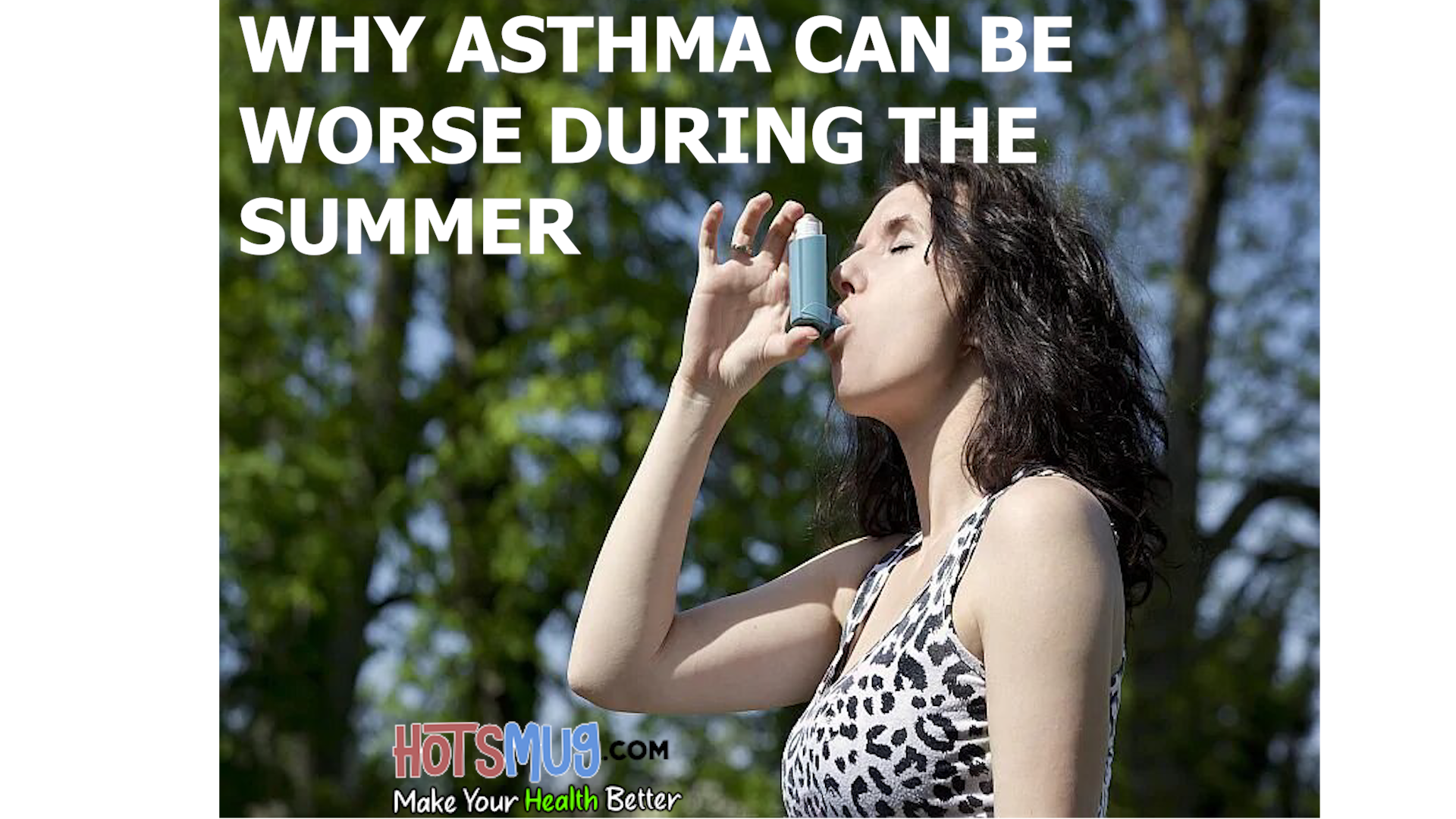If you have asthma, summer can be a difficult season. Heat and humidity can affect your airways and trigger wheezing, shortness of breath, and other symptoms, increasing the likelihood of asthma attacks. This is regardless of the type of asthma you have, but if you happen to have allergic asthma, you may find managing your asthma to be especially challenging, as allergens such as pollen and mold are particularly plentiful in hot, humid weather. The same is true if you have exercise-induced asthma and tend to be more active outdoors during the summer.
People with asthma can have more sensitive airways. “And when you have sensitive airways any kind of pollutants, or any kind of drastic change in temperature — either on the high side or the low side — creates a reaction in the airways. That’s what causes symptoms,” said Mosenifar.
“Environmental triggers play a big role. In the summertime, the temperature rises and there are more pollutants and fume particles in the air,” he added.
Johannes agreed that summer can bring with it a variety of triggers that could make asthma symptoms more prominent.
“Often pollen counts are higher in the summer, which for some people can lead to worse asthma and allergy symptoms. Further, higher humidity and heat can by themselves make it feel harder to breathe,” he said. “The sun interacts with industrial and vehicle emissions to make ground-level ozone, [which] in the summer months can contribute to worse asthma.”
If environmental factors play such an important role in asthma, one thing you can do to minimize your symptoms is to be aware of your environment.
“My recommendation normally is to try and stay indoors. Asthmatics do best if the temperature is 68 to 71 degrees [Farenheit]. I recommend that people go exercising indoors, or late in the day if they have to go out. Stay away from pollens, particularly between April and July, in some parts of the country,” said Mosenifar.
Experts note that during the first summer of the COVID-19 pandemic, more people stayed indoors and this resulted in fewer asthma-related hospital visits.
“During COVID-19 there were less asthma exacerbations because a lot of people stayed indoors. There was less traffic and less air pollution. Mask wearing — particularly N95 masks — also helps out in terms of exposure to pollutants,” said Mosenifar.
“It’s not very easy for people with asthma to walk around with a mask and I understand that, but if you have to go out, I would highly recommend a mask,” he added.
Smoking, while not limited to summertime, can also cause major aggravation in asthma symptoms. Combined with high temperatures, pollen, and pollution, smoking and secondhand smoke put added strain on your body that could cause asthma attacks.
“In the U.S., smoking rates are the same in [people with asthma] and [people without asthma]. Smoking is really bad for everyone, but particularly if you have asthma. This is something people really need to take seriously. People with asthma should stay away from smoking, and from smokers,” said Mosenifar.
Despite the symptoms, asthma is usually treatable.
Many people with asthma have two inhalers. The primary inhaler is for maintenance and the second is a rescue inhaler. They contain different medicines.
It’s important not to use the rescue inhaler for maintenance. Overuse of the rescue inhaler can lead to tachycardia, and you will likely stop responding to the rescue drugs as well.
Sometimes, even with the use of medication, you may need medical assistance.
“Symptoms of worse shortness of breath, wheezing, and chest tightness which does not completely resolve with or recurs soon after a rescue inhaler treatment are quite concerning. These typically warrant immediate medical attention
Asthma doesn’t take a hiatus during the summer. So why do some asthma patients? Studies show that patients who cut back or stop taking daily asthma medication during the summer – without consulting their doctor – are at greater risk of serious asthma symptoms in the fall.
For schoolchildren and even adults, maintaining your usual asthma treatment plan in the summer is one of the best ways to avoid the September Asthma Peak. This is the annual spike in asthma flares and asthma-related hospitalizations among children. Healthcare providers can even predict the point the spike starts: shortly after Labor Day.
Ragweed and mold spores soar in the fall and can trigger asthma. And when the school year begins, children with asthma are exposed to more respiratory illnesses.
Staying on medication schedule is a critical part of an Asthma Action Plan. The Asthma Action Plan gives specific instructions for managing and asthma treatment. Talk with your healthcare provider about adjusting your Asthma Action Plan if you experience increased coughing, wheezing and shortness of breath during summer.
:max_bytes(150000):strip_icc():format(webp)/extreme-weather-and-summer-asthma-whats-important-200527-a687ec432cae435c87b57c614985fbf8.jpg)
What makes asthma symptoms worse?
What can you do about summer asthma symptoms?
Treatments for asthma symptoms
Why is it important to keep taking asthma medications during the summer?




